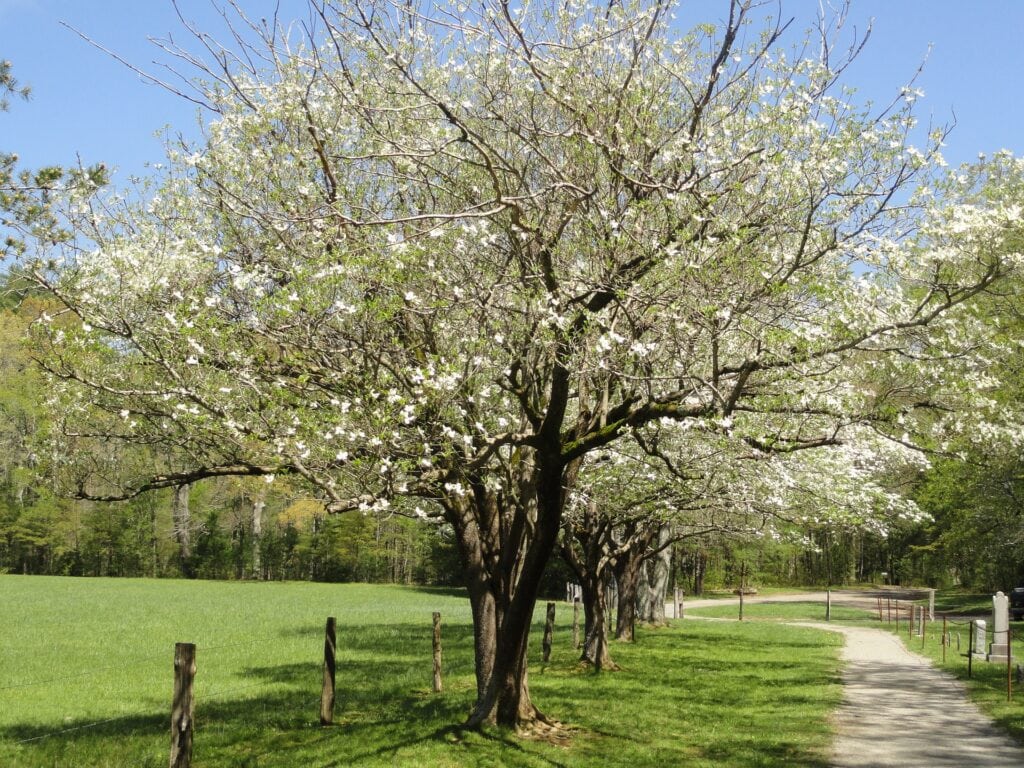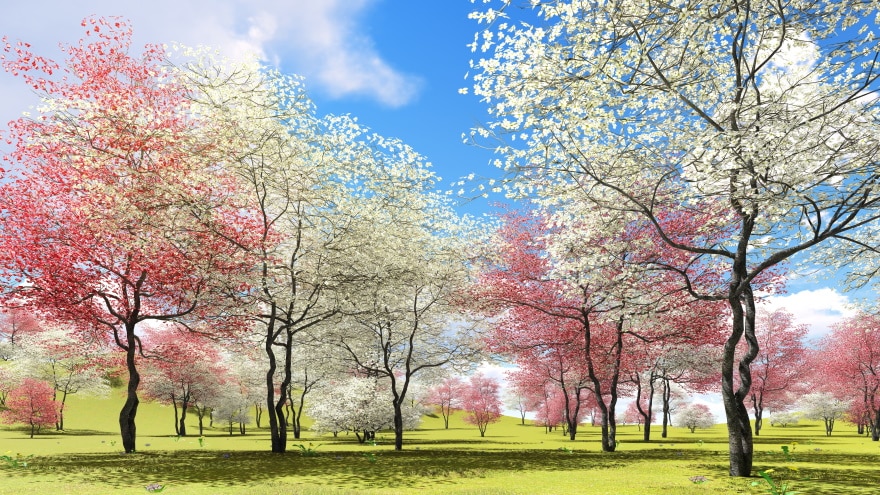How Fast Do Dogwood Trees Grow? Growth Rate Explained
-
Pete Ortiz
- Last updated:

The dogwood tree’s gorgeous bracts, glossy green leaves, and late summer berries supply year-round interest to lawns across the country. As a low-maintenance plant, it’s an easy way to beautify your landscaping, as long as you’re patient. Dogwoods only grow about 1–2 feet per year, so it will take several years to see substantial development.
Once established, the showy, flower-filled canopy will continue to grace your lawn for up to 80 years. It’s well worth the wait, and you can speed things up with careful planning.
How Fast Do Dogwood Trees Grow?
Dogwood trees typically only grow at a rate of 13–24 inches per year. The most common varieties, including the flowering dogwood, kousa dogwood, and cornelian cherry, will grow to 20–25 feet. They can reach up to 40 feet when grown in partial shade, often growing 15 feet in 18 years and 20 feet in 25 years. In many cases, the rounded spread exceeds the height.

What Is the Fastest-Growing Dogwood?
Nearly all dogwood varieties develop at a slow–moderate rate, though a few tend to grow slightly faster than others. Cornelian cherry, for instance, is one of the fastest-growing popular varieties. The fastest-growing (and tallest) dogwood is the giant dogwood (Cornus controversa). The tree, hardy in zones 5–8, can grow 60 feet tall and develop at a medium–rapid rate of up to 36 inches each year.
How Long Will It Take for My Dogwood Tree to Bloom?
A dogwood tree will begin flowering about 5–7 years after planting. Transplanted trees may take a few years to bloom, even if they bloomed at the nursery. Roots grow tight in containers. With more area to spread in a garden or lawn, they’ll focus more on developing roots and size than creating a bevy of blooms.
How to Increase Dogwood Growth Rate
1. Consider Your Location

Dogwood trees vary in their disease and climate tolerances, making some more practical than others in different locations. Flowering dogwoods, for instance, grow in zones 5–9, while Pagoda dogwood trees can thrive as far north as zone 3.
With the spread of anthracnose, a fungus-borne disease, in eastern and southern states, you should consider your potential tree’s exposure. If dogwood trees have struggled due to the disease in your area, a more resistant species such as a kousa dogwood will be a safer choice.
2. Supply Plenty of Moisture
Dogwoods need moist soil but don’t have a high tolerance for soggy conditions. A deep watering of 2–6 inches each week is plenty. Additional watering will be crucial if your dogwood receives full sunlight or is going through a dry spell, especially during the summer.
Add a 2–3 inch mulch layer around the tree 8–10 feet in diameter to retain moisture, ensuring it doesn’t touch the trunk. Incorporate organic materials like leaves and compost to feed the soil.
3. Provide Partial Shade

In their natural environment, flowering dogwoods typically emerge as understory trees. They grow to their fullest potential in dappled shade, where they can receive 4 hours of daily direct sunlight. Full sun will limit the height to around 20 feet and slow the overall growth rate, but you may see more abundant flowering.
4. Apply a Balanced Fertilizer
A small amount of slow-release fertilizer will promote more abundant blooms and stimulate more rapid growth, particularly in younger dogwood trees. Balanced blends such as 10-10-10 are generally appropriate, as are more nitrogen-rich all-purpose blends. Add light applications of fertilizer during the spring and again six weeks after.
Avoid fertilizing trees too late in the summer, especially if they’re water-stressed. You don’t want to stimulate new growth before the weather turns in the fall, as it will likely die off.
Dogwood trees shouldn’t receive any fertilizer the first year after planting. The fragile roots likely won’t benefit from the nitrogen boost. Give them adequate water the first year and begin fertilizing the following season after the last frost. Always test the soil first. It may be in perfect condition already, and you risk stunting your dogwood’s growth by amending it.
Final Thoughts
Dogwood trees take a while to develop, but once they bloom, they’ll remain a highlight of the lawn for decades. Be patient and plan your tree’s growth for the best results, giving it enough shade and space to flourish. By following these tips and preparing the soil properly, you’ll ensure the fastest possible growth.
Featured Image Credit: Piqsels
Contents


